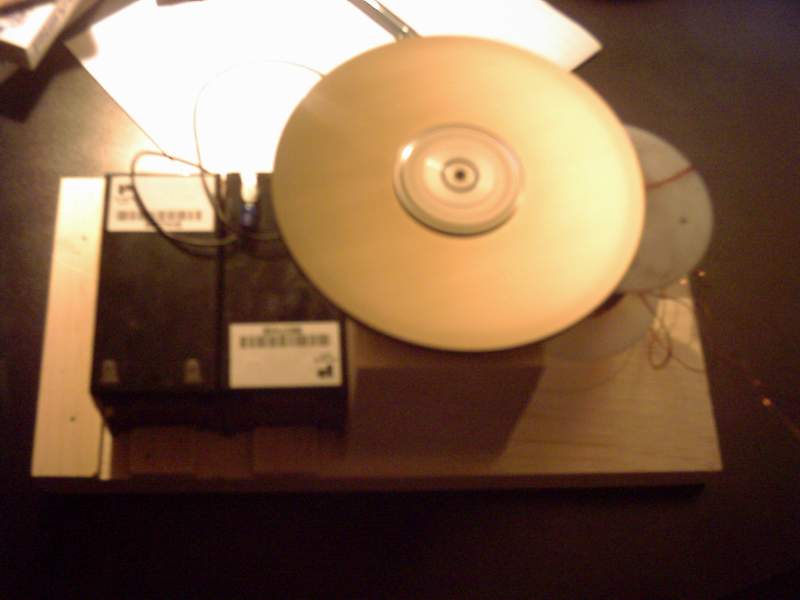Hi Charged,
Congrats on the new diary! This could be a very interesting place to visit...
Hope you don't mind me posting this here - a while back I was asking all sorts of questions about Bedini motors, pulse charging etc.
I finally got down to business yesterday and made up the start to a Bedini motor. So far I have the motor part working quite nicely.
I started with an old Quantum Bigfoot hard drive - it contained a nice pair of 5" diameter aluminum platters. The hard drive's motor contains a set of really nice bearings that seem to have very little drag.
The two plates are about 1 / 4" apart, so I drilled 3 holes at 120 degree spacing in the bottom plate near the outside edge the same diameter as the magnets I had 'in stock'. Then I super glued the magnets to the top platter. The bottom platter's holes surround the magnets so they can't fly out.
Next I built up a wood 'chassis' to hold the rotor. The coil I wound with a tri filar winding out of 24 AWG wire. Due to some miscalculation on my part the coil only has 420 windings (oops!).
I tried a circuit first with some transistors I had in the parts bin. One made some smoke, and another almost ran the motor. In the end I broke down and got one of those TIP3055 (actually it's a MJE3055T) transistors, and a 10K multi-turn pot.
I set up the combined base resistance to about 360 ohms and hooked the battery up. (I'm using 2 1.3 amp hour 12 volt units) One spin and the motor was running.
As near as I can make out it's doing about 1900 rpm and using around 180 ma from the primary battery.
Next up - a 555 timer circuit to dump a cap into the secondary battery. Boy this if fun!!!
Here's a pic of the unit as yet unfinished. There's a set of screws around the inner flange area which are blurred because it's spinning!:

Thanks for all your help, I'll post more when the secondary circuit with the timer and caps is done.
Ted.